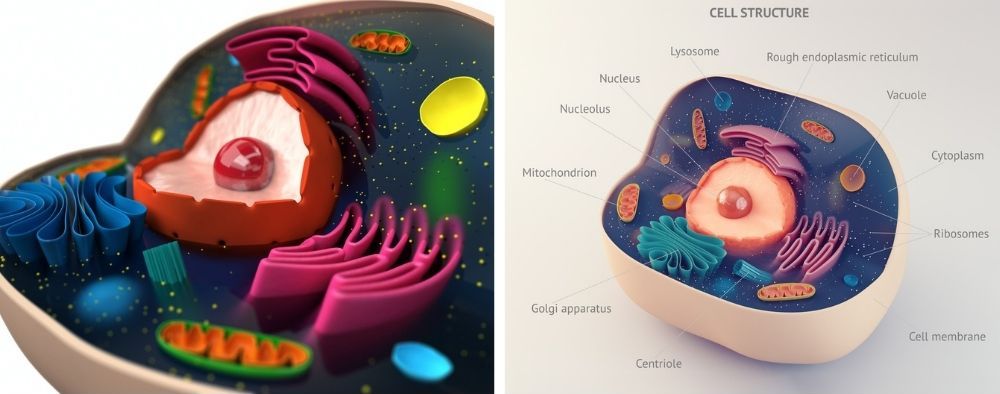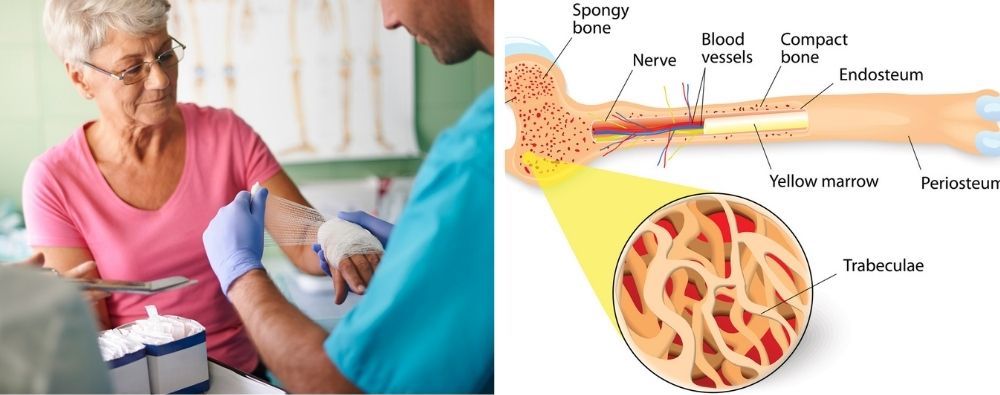
HGH for Recovery: How Does It Help Your Body?
Table of Contents
- What patients should know about the cell
- How does growth hormone aid the repair of damaged cells?
- What is the effect of growth hormone on bone tissue repair?
- How does HGH help repair damaged muscles?
- What effect does growth hormone have on a sprained tendon?
- How does growth hormone repair damaged skin?
- The role of Growth Hormone in the restoration of nervous tissue?
- How does growth hormone help restore health following surgery?
- How to choose the right HGH dosage for various disorders
- The Bottom Line on HGH For Recovery From Surgery and Personal Injury
People recovering from surgery, bone fractures, tendon sprains, skin damage, and other forms of personal injury often face a long uphill battle to restore their mental and physical health.
If you or a loved one has been affected by surgery or any number of personal injuries or conditions that we’ll explore here, one of the many recovery tools that you can use is recombinant human growth hormone (HGH). Let’s explore how you can use a form of synthetic HGH called somatropin for healing.
What patients should know about the cell
Cells are the foundational unit of life in humans and all life on planet Earth. Before we get into how HGH facilitates the regrowth of healthy cells following injury or illness, let’s first discuss the ins and outs of cells, how they form, what they’re made of, and how they function.
How is a cell formed?
Existing cells birth new cells through a process called mitosis. The continual creation of new cells through cell division is part of the ongoing cell cycle.
What is a cell made of?
The word “cell” comes from the Latin word that means “small room.” They house various components that, together, contribute to the overall function of the cell.
The most important components of a cell are:
- Cytoplasm (the “blood” of the cell)
- Cell membrane (the protective coating around the cell that controls what comes in and out)
- Nucleus (contained in the nuclear membrane)
- Mitochondria (the “battery of the cell”)
What are the functions of a cell?
Cells have six primary functions that serve to help the organism survive and thrive. They are:
- providing structure and support
- aiding reproduction
- facilitating healthy growth through mitosis
- allowing passive and active transport of important molecules and other materials
- producing energy to power biological activities
- creating metabolic reactions
What influences cellular health?
Researchers have documented that multiple factors affect cellular health. These include but are not limited to:
- Foods we eat
- Physical activity level
- Lifestyle practices (smoking, drinking, and drug use)
- Emotional state
- Stress levels
- Social relationships
How can a cell be damaged and how can it be restored?
Cells are damaged in several ways. Examples include:
- Impaired production of adenosine triphosphate (ATP) – the main energy source for cells. HGH supplementation has been shown to increase ATP production by as much as 35%.
- Lack of oxygen (hypoxia)
- Lack of blood sugar
- Lack of necessary nutrients
- Toxins from food or pathogens
- Oxidative stress
- Inflammation
- Radiation
Cells have a remarkable capacity for self-repair. Depending on the cause and extent of cellular damage, it can either be reversible or irreversible. For example, in the case of DNA, mild DNA damage to a cell can be reversed without harming the cell cycle, but more extensive DNA damage might not be reparable.
HGH plays a starring, robust role in cellular repair. Accordingly, having sufficient levels in the body is critical for the repair process.
- What are the health impacts of cellular damage?
The health impacts of damage to the cells are wide-ranging. Many are serious or even life-threatening and include:
- Premature aging
- Cancer
- Chronic inflammation
- Necrosis (tissue death)
- neurodegenerative diseases
- autoimmune disease
- weakened immune system function
What are the stages of wound healing?
When cells and tissues are damaged, the body goes to work immediately to repair the affected tissues and cells. The stages of wound healing are:
- Stopping blood flow (hemostasis)
- Scabbing (blood clotting)
- Rebuilding (growth/proliferative phase)
- Maturation (strengthening)
The entire wound healing process can take up to 3 months. The fresh cells and tissues are usually about 80% of the strength and integrity of the original tissue and cells before the injury.
How does growth hormone aid the repair of damaged cells?
HGH for recovery works at the genetic level to facilitate cellular and tissue repair, activating genes responsible for these processes. In fact, many scientists believe that declining HGH levels over time are responsible for the aging process in large part.
What mechanisms does growth hormone use restore damaged tissues?
Here are the mechanisms that HGH uses, partnership with another crucial anabolic hormone, insulin-like growth factor 1 (IGF-1), works to promote wound healing:
HGH facilitates the production and release of IGF-1 by the liver which, in turn, aids in tissue regeneration by inducing cell proliferation and migration and increasing protein production.
What conditions or diseases can interfere with the restorative action of the HGH?
Several conditions can hinder the restorative action of HGH. HGH is released in the greatest concentrations naturally during deep sleep. Accordingly, many sleep disorders, such as slow wave sleep (SWS) disorders lower HGH production and harm its ability to restore damaged cells and tissues.
In addition to poor sleep quality reducing HGH, other factors also negatively impact HGH levels in adults:
- Traumatic brain injury
- High stress levels
- Lack of physical activity
- Obesity
What positive effects does HGH have on cellular function?
HGH exerts positive effects on cell function in numerous ways:
- Increasing ATP, cell’s energy source
- Speeding up damage to cells, including to DNA
- Activating genes tied to cell repair
- Enhancing metabolism (the efficient processing, storage, and use of energy)
- Stimulating healthy growth and development of cells (anabolism)
- Burning excess body fat
What is the effect of growth hormone on bone tissue repair?
Following a bone fracture, HGH is an essential component of the healing process. Here, we’ll discuss how growth hormone facilitates bone repair following a fracture, especially in patients with low HGH levels.
Experts estimate that 6.2 million Americans suffer from bone fractures each year, so bone health is an extremely important public health concern.
How is bone tissue formed and what does it consist of?
Bone tissue formation is a complex process, which is “a series of sequential events that begin with the recruitment and proliferation of bone progenitor cells from surrounding tissues, followed by differentiation, matrix formation and mineralization.”
Bone homeostasis, the ongoing process of the maintenance of healthy bone tissue, is a balancing act between two types of cells: osteoclasts and osteoblasts. Osteoclasts are responsible for bone resorption (the breakdown of bone tissue to release minerals into the blood and remodel the tissue) while osteoblasts are responsible for bone formation. A proper balance between resorption and formation is crucial for optimal health.
How does HGH impact the cell and bone tissue in general?
HGH, in partnership with another anabolic hormone insulin-like growth factor 1 (IGF-1), is closely involved in both osteoblast and osteoclast activity: “The result is an increase in the overall rate of bone remodeling, with a net effect of bone accumulation.”
The bottom line is that HGH produces stronger, healthier, more resilient bone tissue. Keeping HGH levels in the optimal range is especially important in older individuals who are prone to osteoporosis, the age-related weakening of bones.
How does HGH help restore damaged bone tissue?
HGH facilitates bone repair by orchestrating optimal communication between osteoblasts and osteoclasts, which, as we mentioned, are the two main cell types needed for healthy bone remodeling. Numerous studies have documented “a positive role of GH on fracture healing as demonstrated… on osteoblasts, osteoclasts and the crosstalk between the two. Animal studies have demonstrated a number of factors influencing the effect of GH in vivo.”
As the British Medical Journal notes, studies on HGH’s contribution to bone healing have shown that “GH led to an increase in serum IGF-1, stimulation of fracture healing and acceleration of ossification of bone regenerate in distraction osteogenesis.“
How long does damaged bone tissue take to recover?
The timeframe for bone tissue repair after a fracture varies depending on the type and severity of the fracture and the affected bones, but, in general, it takes 6-8 weeks to heal bone tissue.
How does HGH help repair damaged muscles?
Muscle repair is an essential ongoing function for maintaining the integrity and functionality of the human musculature. Even without an injury, everyday activities result in damage to muscle fibers (if you’ve ever been sore following a workout, you know firsthand). HGH is crucial for healthy muscle repair. Here’s how.
How is muscle tissue created and what does it consist of?
Muscle tissue, also called myopropulsive tissue, forms through a process called myogenesis. In myogenesis, precursor cells called myoblasts fuse into multinucleated fibers known as myotubes. Myoblasts are the precursor cells to myocytes, which are sometimes called “muscle cells.”
What conditions or diseasing affecting muscles does HGH help to treat?
Several health conditions cause clinically serious losses of muscle called muscle wasting or muscle atrophy. HGH can help to maintain muscle mass in patients experiencing debilitating muscle loss. These conditions include:
- Malnutrition
- Inactivity
- Alcohol-associated myopathy
- Aging (sarcopenia)
- HIV/AIDS
- Personal injury that results in limited mobility
How does it affect each disease?
HGH has been shown to effectively combat muscle wasting in the case of cystinosis, an inherited disease characterized by an unhealthy buildup of a specific amino acid called cysteine.
There is extensive clinical evidence to support the therapeutic use of HGH in HIV/AIDS patients experiencing muscle wasting. HGH mitigates age-related muscle loss in elderly patients. Older people are much likelier to suffer from growth hormone deficiency (GHD) than younger patients.
Athletes who experience personal injury often benefit from HGH therapy to prevent muscle loss due to an inability to train at the same level as prior to the injury.
What are the positive effects on muscles of growth hormone?
As an anabolic hormone (growth-promoting hormone), HGH stimulates the processes of collagen synthesis in tendons (connective tissues) and skeletal muscle.
Which muscle conditions or diseases should not be treated with growth hormone?
Some conditions associated with muscular atrophy or muscle wasting may not be effectively treated with HGH — for example, a pair of neurodegenerative conditions called multiple sclerosis and myotrophic lateral sclerosis.
Why should HGH not be taken to treat these diseases?
Studies have shown limited effectiveness, so far, in using HGH to treat these conditions.
What health consequences can using HGH to treat these conditions lead to?
The incorrect use of HGH may come with side effects and, in some cases, may actually negatively interact with other treatment protocols and worsen or speed the development of certain conditions.
How long does it take to recover from muscle conditions and diseases?
The time to recover from various muscular conditions and diseases depends largely on the nature of the illness. For example, muscle atrophy due to malnutrition may be effectively reversed in a matter of weeks with the resumption of proper nutrition. In other cases, for example, HIV/AIDS, the prognosis is much more complicated. The path to recovery is less certain, and slower.
What effect does growth hormone have on a sprained tendon?
Tendons are the connective tissues that hook the muscle tissue to the bone, a critical piece of the musculature machinery to power movement. Their basic function is to facilitate muscle contraction, as happens when we run, jump, or punch.
How does growth hormone help in healing a sprained tendon?
Sprained tendons can result in huge physical setbacks, limiting the ability to perform athletically as well as for non-athletes’ capacity for performing everyday tasks. Several studies have shown that “rhGH administration caused a rise in matrix collagen synthesis in skeletal muscle and tendon.” Collagen synthesis, in turn, is critical for rebuilding damaged tendons.
What positive effects does HGH have on a sprained tendon?
The main mechanism through which the pro-growth hormone facilitates sprained tendon repair is that HGH increases collagen synthesis. HGH’s partner hormone, growth factor 1 (IGF1), is also important for optimizing tendon growth and function. HGH supplementation also increases IGF-1 levels. Sprained tendons usually take 3-weeks of recovery time to heal.
How does growth hormone repair damaged skin?
One of the biggest benefits of growth hormone is its effect on the skin, producing healthier-looking, more radiant complexions and texture.
- Skin, and what are main functions?
The skin is the largest organ in the body, consisting of fats, minerals, protein, and water. There are three layers to the skin: epidermis, dermis, and subcutaneous tissue.
- What effect does growth hormone have on skin cells?
Growth hormone increases skin thickness and elasticity. Through this mechanism, it reduces wrinkles to produce a younger-looking appearance.
- What mechanisms does growth hormone use to restore damaged skin cells?
HGH produces thicker, smoother, more lustrous skin by boosting collagen mRNA expression and increasing collagen protein synthesis.
What type of skin conditions can HGH treat?
Here are the skin conditions that HGH can potentially treat:
- Sagging, wrinkled skin associated with low collagen levels
- Acne
- Superficial skin wounds
What skin conditions should not be treated with HGH?
Some skin conditions should not be treated with HGH, such as:
- Eczema
- Psoriasis
- Rosacea
- Hives
Why should HGH be avoided for these conditions?
There is no, or limited, evidence that HGH can treat the above conditions.
What are the potential health consequences of using HGH to treat these conditions?
Attempting to treat the above health conditions with HGH can result in adverse side effects and a worsening of the condition due to an inappropriate treatment protocol.
How long does it take to recover from skin diseases and conditions?
The time it takes to recover from skin diseases and conditions depends on the type of the condition and its severity, ranging from a few days to weeks.
The role of Growth Hormone in the restoration of nervous tissue?
HGH, which acts across multiple components of the nervous system, including in the brain, spinal cord, and peripheral nerves, is critical for repairing damaged nervous system tissue caused by disease or injury.
What are nerve cells and nerve fibers?
Nerve cells, called neurons, are the basic communication tool of the brain, relaying important messages to each other to regulate various brain activities.
Nerve fibers, also called axons, are the connective tissues that carry messages away from the neuron, to another nerve cell or to a muscle or gland cell.
What structures do they consist of?
Neurons and nerve fibers consist of the following main components:
- Nucleus
- Cell body
- Dendrite
- Axon
- Myelin sheath
- Axon terminals
What is their role for the body?
The main role of nerve cells is to send and receive signals to and from the brain throughout the body.
What beneficial effects does growth hormone have on nerve cells?
HGH stimulates nervous tissue and somatic growth by regulating:
- Cell division
- Cell regeneration
- Cell proliferation
Neurons (brain cells) that have receptor sites for HGH are located throughout the entirety of the nervous system, meaning that it impacts a wide range of nervous system functions such as:
- Neuroendocrine changes
- Metabolism
- Cognition
- Behavior
By what mechanism does HGH restore nerve cell function?
HGH restores nerve cell function through numerous mechanisms:
- Increased axon density
- increased axon diameter
- increased myelin thickness
- improved muscle re-innervation
- reduced muscle atrophy
- greater recovery of motor function
What nervous system conditions and diseases can HGH be used to treat and which can it not?
The evidence shows that HGH can be used to treat the following nervous system diseases and conditions:
HGH should not be used to treat the following nervous system diseases and conditions:
- Meningitis
- Epidural abscess
- Encephalitis
- Polio
Why should patients avoid HGH for certain nervous system conditions?
There is limited or no evidence that HGH can treat the above-listed conditions.What negative health consequences can using HGH in these situations this lead to? Improper HGH use may lead to unwanted side effects and harm effective treatment strategies.
How long do nervous system conditions take to recover from?
Some nervous system conditions, such as ALS, are progressive and do not currently have a cure. Other conditions, especially mild ones like transient headaches, may be resolved in as little as a few hours.
How does growth hormone help restore health following surgery?
HGH is often used by therapists during the recovery process following surgery.
What changes in the body occur during and after surgery?
By its nature, surgery is an invasive treatment modality that produces potentially serious changes in the body.
General changes in the body
Some potential systemic changes in the body following surgery can include:
- Nausea
- Vomiting
- Sleeplessness
- Thirst
- Constipation
Sometimes serious, potentially life-threatening post-surgery complications develop such as:
- Hemorrhage
- Deep vein thrombosis (DVT) and pulmonary embolism (PE)
- Wound infection
- Shock
Local changes at the incision site
At the incision site, patients often experience:
- Pain
- Soreness
- Swelling
How can growth hormone facilitate post-surgery recovery?
HGH after surgery facilitates post-surgery recovery in multiple ways:
- Increased postoperative muscular strength
- Preservation of limb lean tissue mass
- Reduced long-term postoperative fatigue
- improving positive nitrogen balance
- Faster wound healing
How long does it take to recover from surgery?
Recovery from surgery generally takes 1-2 months.
How to choose the right HGH dosage for various disorders
Your hormone doctor (endocrinologist) will determine the right HGH dosage based on individual factors.
- What healthcare specialist can help to calculate the correct HGH dose?
An endocrinologist can recommend the correct HGH dosage to achieve your healthcare goals.
- What factors determine the correct growth hormone dose?
The factors that determine the correct HGH dose include:
- Age
- Sex
- Condition to be treated
- Body mass index
- Severity of HGH deficiency
The Bottom Line on HGH For Recovery From Surgery and Personal Injury
To recap, let’s review the key science-backed benefits of HGH replacement therapy for various injuries and conditions:
- For wound healing: HGH speeds up wound healing for faster recovery
- For bone repair: HGH is essential for the bone repair process following a fracture
- For muscle repair: HGH facilitates the repair of damaged muscle as well as maintaining healthy muscle tissue
- For sprained tendons: HGH promotes tendon repair via college synthesis
- For damaged skin: HGH increases collagen levels in the skin for healthier, younger-looking skin
- For nervous system repair: HGH protects nervous system health and facilitates nerve regeneration
- For post-surgery recovery: HGH maintains nitrogen balance, speeds wound healing, and preserves lean tissue mass in the limbs following surgery




